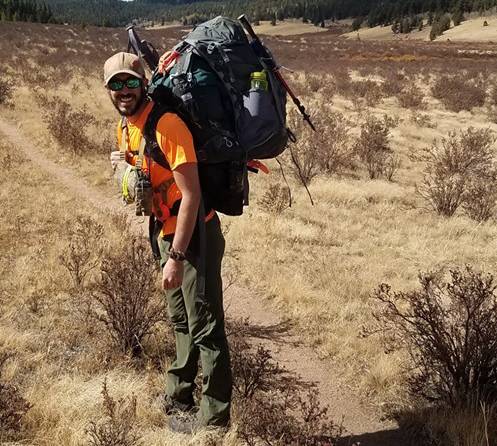How to Pack for the Woods
How to Pack for the Woods so You Don’t Die
Packing for time in the backcountry is a game of balance. The more you know, the less you need to carry. People who don’t know what they are doing tend to carry way too much stuff. On the other hand some people like to say, “pack light, cold at night” and bring the kitchen sink on purpose. Your task is to find the golden mean. Don’t make your life harder than it needs to be.
We always carry some form of the 10 essentials. Below is a list the 10 essentials and some examples of what to carry. When you’re making your packing list, try and cover these bases:
| 1. Navigation | Map/Compass, Notebook |
|---|---|
| 2. Sun Protection | Bandanna, Hat, Sunglasses |
| 3. Insulation | Extra socks, Jacket |
| 4. Shelter | Emergency blanket, Poncho, Paracord |
| 5. Illumination | Headlamp, Flashlight |
| 6. First Aid | Duct tape, Ibuprofen, TP |
| 7. Fire | Lighter, Strike Anywhere Matches, Cotton Balls |
| 8. Tools | Knife, Leatherman |
| 9. Nutrition | Food |
| 10. Hydration | Bladder, Water bottle, Water Purification |
TIPS
• Try and pack multi-use items. For instance an extra pair of wool socks could double as gloves in an
emergency or a poncho can be used with some branches to make a litter.
• Put all your gear out on the floor and then try to put half of it away. Get rid of anything that is
redundant.
• Don’t bring anything that you could easily find and/or improvise in your target environment.
• Cotton kills. Don’t wear cotton. Don’t pack cotton. Don’t do it.
• Use layers. This means don’t just pack a t-shirt and a down parka. Consider the weather forecast
and find three to five layers that, when all worn at the same time, will keep you warm at the
coldest temperature, out of the wind, and let you dry after you get wet.
• Down doesn’t work when wet. Think twice before using it.
• Buy quality and you only cry once.
• Buy simple stuff that isn’t likely to break, but if it does is easy to fix. Duct tape is your friend.
RULES
A lot of the same rules apply when packing your first aid kit. Find multi-use items. Consider the things you’re likely to run into and plan accordingly. Here are the top few things I prepare for:
| 1. Strain/Sprain | Ibuprofen, Triangular bandage, Vetwrap, Safety pins |
|---|---|
| 2. Fracture | SAM splint |
| 3. Cuts/Scratches | Triple Antibiotic Ointment, Band Aids, Gauze, Duct Tape |
| 4. Bleeding | Tampons, Sanitary Napkins, Kurlex (roll gauze), Quikclot |
| 5. Blisters | Moleskin, Second skin |
| 6. Cold Injury | Handwarmers, Sugary Drink (Jell-o or Hot Cocoa) |
The above is what we consider a pretty comprehensive kit (seriously) for a group. You don’t need to bring an ambulance with you – you probably don’t know how to use most of that stuff anyway. In addition you should bring some gloves and maybe some trauma shears. For a personal, small kit we carry the following items: duct tape, a couple sanitary napkins, ibuprofen, gloves, moleskin, and some gauze.

